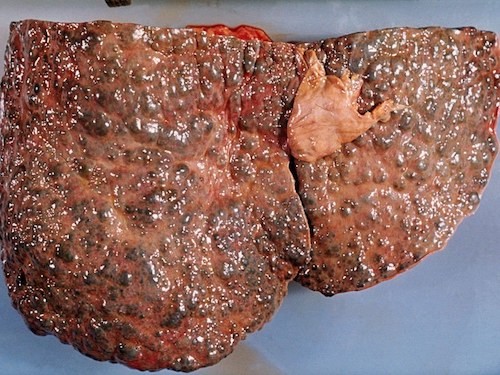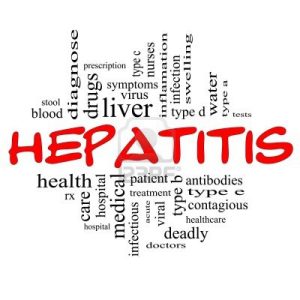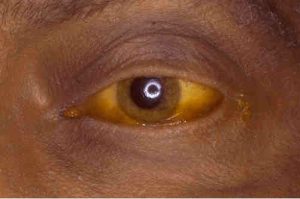
Cirrhosis of the Liver Stage 4
It's been 11 years since I started my Wiki and shared articles on Liver Disease. In that time the website in its various forms has had millions of visitors and helped countless people.
I've only ever asked for help once in those 11 years and that was to help pay the hosting. But that was only once.
For the rest of the years I have built, populated, maintained and tried to improve the website and given support to many people.
It now turns out that I have cancer of the throat - just diagnosed in January 2020.
I have created a Facebook page to post updates on - https://www.facebook.com/Craig-Cameron-My-Story-104963801053247/
Once I get 200 Likes I can change the name to remove the numbers on the end - and that will look better 🙂
I really would appreciate it if you would visit my Facebook page and 'Like' it -
Once I get some support from the people who visit this site I will remove this message.
Cirrhosis of the Liver Stage 4
This site can teach you how to manage, treat and even reverse cirrhosis of the liver stage 4. Many of our members have been able to resume near normal lives without needing a transplant.
If you are worried about cirrhosis this site can help you.
Looking for information on cirrhosis of the liver stage 4? Liver cirrhosis, a ‘silent killer’, is a chronic disease. There are no symptoms during the early phases of this disease. Read on to know about liver cirrhosis stages and cirrhosis of the liver life expectancy.
Liver cirrhosis indicates injured or damaged liver cells. Normal liver tissues get replaced with scar tissues during liver cirrhosis. Scarring of the liver is caused by long term injury or damage to the liver resulting in loss of liver function. Cirrhosis of the liver stage 4 denotes the final stages of the disease.
Liver plays an important role in digestion and detoxification. Cirrhosis of the liver affects the liver function. As liver cirrhosis cannot be reversed, the treatment involves only prevention of further progression of the disease.
Cirrhosis of the Liver Stages
Cirrhosis of the Liver Stage#1:
During this initial stage of cirrhosis, the person normally does not experience any symptoms. If closely observed, there are symptoms indicating liver function problem, which include dry mouth, fatigue, jaundice and enlargement of the upper stomach area. Itching sensation is also sometimes experienced.
The liver suffers from inflammation and abnormal tissue but disease progression and liver function deterioration is very slow. Advancement of cirrhosis of the liver can only be determined by biopsy results.
The initial stage of liver cirrhosis is actually called ‘compensated stage’, as the body successfully manages and compensates on its own for all the shortcomings that are brought on by malfunctioning of the liver.
Cirrhosis of the Liver Stage#2:
During this stage, abnormal tissues developed inside the liver get transformed into stiff bands of connective tissues. This process is known as fibrosis. Fibrosis and inflammation of the liver spreads and affects the portal veins and the surrounding regions.
Cirrhosis of the Liver Stage#3:
As the disease advances, all the stiff bands begin to merge with each other. This leads to the enlargement of affected areas. Disruption of liver functions is generally noticed during this stage, as the person experiences inability to digest fats. Vitamin deficiency can also be noticed due to problem in absorption of fat-soluble vitamins.
Cirrhosis of the Liver Stage#4:
The final stage of liver cirrhosis is known as the decompensated stage of cirrhosis. This stage is the most dreaded one. Liver transplant is the only treatment option for patients in the decompensated stage. (Note: This statement is not completely accurate. For those with Alcoholic Cirrhosis the damage can be halted and a return made to reasonably normal life by abstaining from alcohol, undertaking a regimen of vitamins and minerals and eating a healthy diet. This can and does happen as long as the disease is not too far advanced. Further information is available on this site which will set you on the right path. Many people who have joined this site have survived through the help given by this site.)
Worsening of all the symptoms can be noticed. Here is a list of most common liver cirrhosis symptoms.
Liver Cirrhosis Symptoms:
Compensated Stage
Fatigue
Extreme thirst
Thick coating on the dorsal surface of the tongue
Anorexia
Nausea
Abdominal bloating
Dull ache in the liver area
Cirrhosis of the Liver Stage 4 Symptoms:
Decompensated Stage
Spider moles
Liver shrinkage
Jaundice
Edema
Ascites
Liver palms
Low grade fever
Severe fatigue, exhaustion
Loss of appetite
Stomach pain and cramps
Easy bruising and bleeding (especially in the abdominal region)
Cirrhosis of the Liver Life Expectancy
Cirrhosis of the liver stage 4 can result in severe health complications such as portal hypertension, spleen enlargement, hardening of liver, kidney dysfunction and accumulation of fluid in the body. Loss of bone mass and a drop in the bone density can also be noticed. Pertaining to the impaired liver functioning, the body will lose its ability to detoxify itself, resulting in concentration of toxins in the body. This will lead to severe confusion, even a coma.
After heart disease and cancer, liver cirrhosis is the third leading cause of death. There are many types of cirrhosis, based on the causes. Alcoholic cirrhosis has the worst prognosis, when compared to primary biliary cirrhosis or cirrhosis induced by hepatitis. Cirrhosis life expectancy can be about 15 to 20 years if cirrhosis is detected during an early stage.
If the disease is detected in second stage, life expectancy will be about 6 to 10 years. Patients in earlier stages can opt for latest treatment options, liver transplant, latest medicines, etc. If cirrhosis is diagnosed during the last stage, then life expectancy will be about 1-3 years, depending upon the patient’s overall health, availability of advanced treatment, etc.
I hope the above information has helped you to understand what is cirrhosis of the liver. Liver cirrhosis does not have a sudden onset, it takes years of damage to produce harmful scarring, and then many more years of abuse for the liver to stop functioning completely. Overlooked underlying conditions make the condition deadly. Cirrhosis treatment can help stop or slow down the progression of the disease.
During cirrhosis of the liver stage 4, liver failure and other health complications ultimately result in death of the person. Since cirrhosis of the liver and death are closely associated, it is necessary to undergo routine medical check-ups to monitor liver function. Cirrhosis is mostly detected during the test for some other health problems. Half yearly examination can help improve your chances of detecting an early cirrhosis.
By Leena Palande
Published: 8/14/2010
Related Posts
Cirrhosis Regression in Chronic Hepatitis C: An Old Tale With a New Ending
Cirrhosis Regression in Chronic Hepatitis C This is a complex article, but worth reading. It seems to move the science from treating HepC as such to regression of the cirrhosis which makes sense as it is the cirrhosis that makes you feel like crap and it is the cirrhosis that will kill you. Craig Mallet…
The Not-So-Sweet Truth: Sugar Worsens Hep C
Sugar Worsens Hep C Having an incurable disease like Hepatitis C can leave many feeling helpless over the course of their illness. However, there are many everyday choices that can either fan the flames or reduce the impact of this virus. Sugar consumption is a prime example of how food selection can affect the progression…
Is Coffee a Wise Adjunct to Hepatitis C Therapy?
Is Coffee a Wise Adjunct to Hepatitis C Therapy? March 9, 2011 In the debate over coffee’s effect on health, coffee lovers who are undergoing treatment for Hepatitis C have just scored a victory. by Nicole Cutler, L.Ac. As one of the world’s most common beverages, coffee has a long list of devotees. Even with…
Diet for cirrhosis – rich in protein!
Diet for cirrhosis – rich in protein! An article that actually recommends a high protein diet – will wonders ever cease!!!! Craig A fundamental aspect of the hepatitis diet is to avoid alcohol of any kind. In cases where this rule is not respected, the liver cirrhosis occurrence is frequent and can lead to the…
Diet and Weight Loss with Cirrhosis
Diet and Weight Loss I’m was only a slim guy before being hit with cirrhosis in Nov 2008, weighing around 155lbs. Over the Christmas period I was unbelievably sick and was throwing up at the top end and the bottom end was like a Peruvian mud slide! I lost weight, particularly muscle on my arms,…
Cirrhosis Risks Reduced By Eating Dark Chocolate
Cirrhosis Risks Reduced By Eating Dark Chocolate Dark chocolate has health benefits for those with cirrhosis and a related condition called portal hypertension, according to some recent research. This article explains the science behind this sweet news.|Dark chocolate is not only good for the heart. It can also be good for the liver, especially in…
Cirrhosis – Dietary Factors
Cirrhosis – Dietary Factors Healthy Foods. Because important antioxidant vitamins are depleted in the cirrhotic liver, cirrhosis patients should maintain a diet rich in fresh fruits, vegetables, and whole grains. Antioxidant Supplements. There is some preliminary laboratory evidence that various antioxidant supplements including vitamin E, selenium, and S-adenosylmethionine (SAMe) may help protect against liver damage…
Cirrhosis and Chronic Liver Failure: Part II. Complications and Treatment
Complications and Treatment JOEL J. HEIDELBAUGH, M.D., and MARYANN SHERBONDY, M.D. University of Michigan Medical School, Ann Arbor, Michigan Major complications of cirrhosis include ascites, spontaneous bacterial peritonitis, hepatic encephalopathy, portal hypertension, variceal bleeding, and hepatorenal syndrome. Diagnostic studies on ascitic fluid should include a differential leukocyte count, total protein level, a serum-ascites albumin gradient,…
Symptoms of Cirrhosis of the Liver
Symptoms of Cirrhosis of the Liver Cirrhosis of the liver refers to a condition characterized by the development of fibrous scar tissue on the liver and regenerative nodules or lumps. This chronic liver disease leads to progressive deterioration of liver function… Liver function is vital to detoxification and protein synthesis, within the human body. It…
Liver Diseases and their Symptoms
Liver Diseases and their Symptoms Alagille Syndrome – an inherited disorder characterized by a progressive loss of the bile ducts within the liver and narrowing of bile ducts outside the liver over the first year of life. Symptoms include jaundice, pale, loose stools and poor growth within the first three months of life. Alpha 1…









